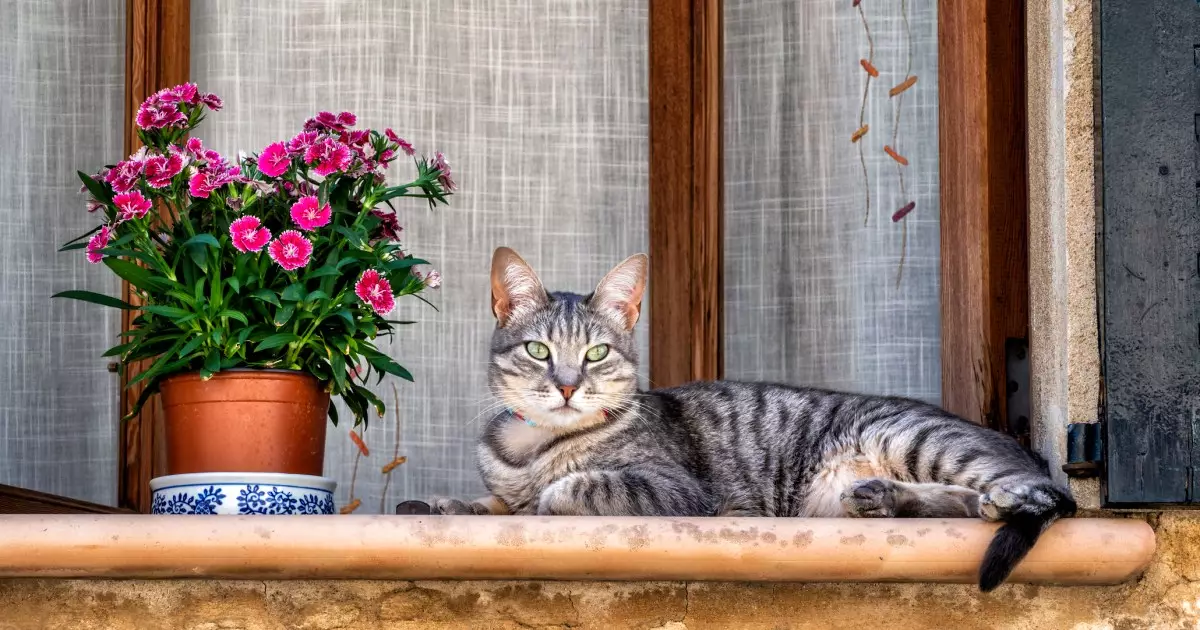Cats are often perceived as independent creatures, thriving on their instincts and natural behaviors. While the image of cats frolicking in the great outdoors might seem appealing, pet health experts overwhelmingly advocate for an indoor lifestyle as the safest option for felines. The transition to an indoor life can be daunting, both for the pet and the owner, but myriad benefits accompany the choice to keep a cat indoors. The statistics are striking: indoor cats boast an average lifespan of 13 to 17 years, whereas their outdoor counterparts typically survive just two to five years. Understanding the rationale behind this disparity is crucial for every cat owner deliberating the indoor versus outdoor dilemma.
Cats are natural explorers, but their curiosity can expose them to numerous hazards lurking beyond the comfort of home. The risks of allowing cats to roam outdoors are substantial and diverse. From the immediate threat of vehicle accidents to the potential heartbreak of a lost pet, the dangers are real and present. Furthermore, outdoor cats face threats from aggressive dogs, territorial disputes with other felines, and predation from wildlife. Environmental risks extend to toxic substances that careless neighbors might leave on the ground, as well as parasites such as fleas and ticks which can quickly invade and infest the home. Additionally, the likelihood of contracting diseases spread by other animals in communal environments is significantly heightened for outdoor cats.
Overall, the perils of outdoor life can lead to premature mortality, often in distressing and avoidable ways. Protecting a pet by limiting their world to the indoors is not merely a precaution; it is a commitment to their well-being and longevity.
While the indoor environment shields cats from myriad dangers, it is generative of its own set of challenges. Boredom can afflict indoor cats, leading to behaviors that owners might view as disruptive or undesirable; these can range from excessive vocalization to destructive play. Furthermore, a sedentary lifestyle often results in weight gain and lethargy, particularly if sufficient exercise and stimulation are not integrated into the daily routine.
However, these impediments are not insurmountable. Responsible pet ownership involves proactively addressing the needs of an indoor cat by enriching their living space. Engaging activities such as climbing structures, interactive play sessions, and stimulating toys are essential strategies that can be employed to provide mental and physical stimulation.
Cats require an environment where they can exhibit their natural behaviors—climbing, scratching, and exploring. Providing diverse enrichment options can help mitigate boredom and the associated behavioral issues. For instance, placing a cat tree near a window can capture a cat’s attention, allowing it to watch birds and other wildlife safely from the confines of home.
While the aim is to keep indoor cats safe, it is vital not to overlook their need for physical activity and mental stimulation. Innovative solutions such as “catios”—enclosed outdoor spaces designed specifically for cats—can provide an outlet for their innate curiosity without exposing them to the dangers of unrestricted outdoor access. These setups not only allow for fresh air but also give felines an opportunity to engage in natural behaviors such as climbing and observing.
Additionally, outdoor enclosures and controlled outdoor playtime, perhaps with a harness and leash, can be considered as alternatives for cat owners wishing to fulfill their pets’ outdoors instincts. While these methods require planning and sometimes investment, they offer a bridge that combines safety with enjoyment.
Ultimately, the decision to keep a cat exclusively indoors or allow limited outdoor access hinges on the specific circumstances of both the pet and the owner. While enthusiasm for outdoor exploration is undeniable, the associated risks are substantial and often outweigh potential benefits. By adopting a proactive approach to indoor enrichment, implementing safe outdoor alternatives, and being diligent about health monitoring, pet owners can ensure their cats lead healthy, fulfilling lives free from unnecessary dangers.
In an era where pet ownership increasingly focuses on welfare and longevity, the indoor lifestyle emerges not only as a responsibility but as a hallmark of compassionate care. Through understanding, adaptation, and commitment, feline companions can thrive indoors—experiencing joy and contentment while enjoying a life that is both enhanced and safeguarded.
